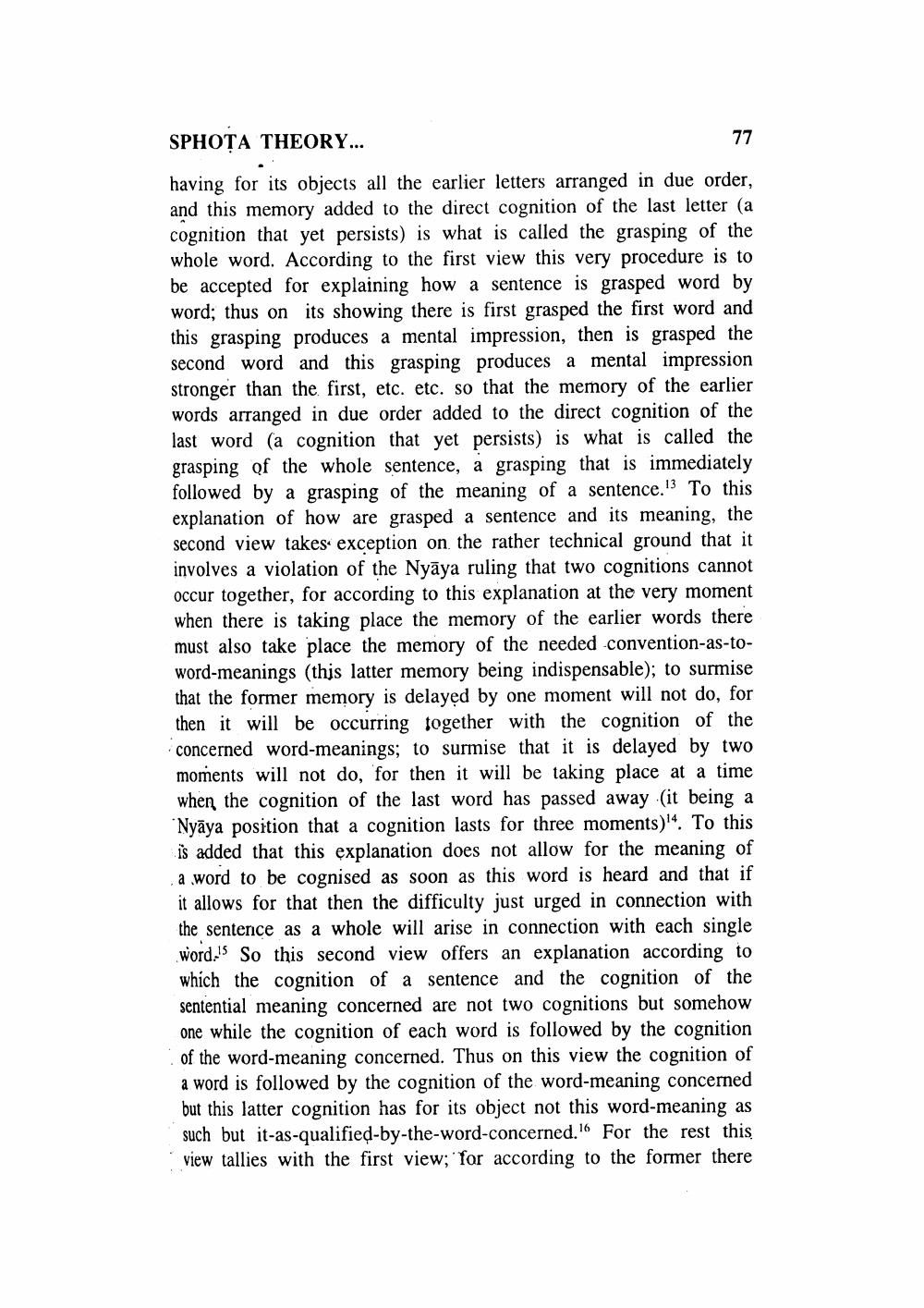________________
SPHOTA THEORY...
77 having for its objects all the earlier letters arranged in due order, and this memory added to the direct cognition of the last letter (a cognition that yet persists) is what is called the grasping of the whole word. According to the first view this very procedure is to be accepted for explaining how a sentence is grasped word by word; thus on its showing there is first grasped the first word and this grasping produces a mental impression, then is grasped the second word and this grasping produces a mental impression stronger than the first, etc. etc. so that the memory of the earlier words arranged in due order added to the direct cognition of the last word (a cognition that yet persists) is what is called the grasping of the whole sentence, a grasping that is immediately followed by a grasping of the meaning of a sentence.13 To this explanation of how are grasped a sentence and its meaning, the second view takes exception on the rather technical ground that it involves a violation of the Nyāya ruling that two cognitions cannot occur together, for according to this explanation at the very moment when there is taking place the memory of the earlier words there must also take place the memory of the needed-convention-as-toword-meanings (this latter memory being indispensable); to surmise that the former memory is delayed by one moment will not do, for then it will be occurring together with the cognition of the concerned word-meanings; to surmise that it is delayed by two moments will not do, for then it will be taking place at a time when the cognition of the last word has passed away (it being a Nyāya position that a cognition lasts for three moments)'4. To this is added that this explanation does not allow for the meaning of a word to be cognised as soon as this word is heard and that if it allows for that then the difficulty just urged in connection with the sentence as a whole will arise in connection with each single word. So this second view offers an explanation according to which the cognition of a sentence and the cognition of the sentential meaning concerned are not two cognitions but somehow one while the cognition of each word is followed by the cognition of the word-meaning concerned. Thus on this view the cognition of a word is followed by the cognition of the word-meaning concerned but this latter cognition has for its object not this word-meaning as such but it-as-qualified-by-the-word-concerned. 16 For the rest this view tallies with the first view; 'for according to the former there




